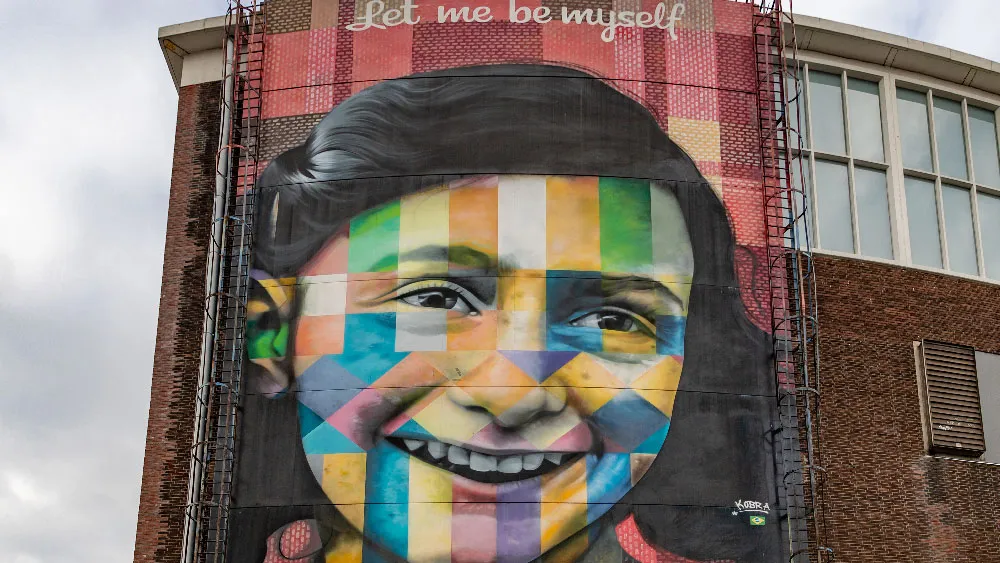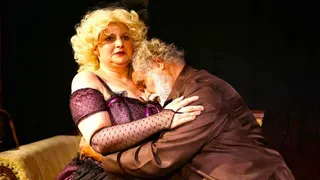November 6, 2015
Peggy Guggenheim: Art Addict
Robert Nesti READ TIME: 3 MIN.
Three years ago Lisa Immordino Vreeland made a hugely entertaining documentary about her grandmother-in-law Diana Vreeland, the flamboyant, dynamic editor who in her years at Vogue created the modern fashion magazine. That film, "The Eye Has to Travel," was both a joyous celebration of life well-lived and a cultural portrait of high fashion both before and well after the Second World War.
In her new film, "Peggy Guggenheim: Art Addict," Ms. Vreeland takes on another legendary contemporary of Diana Vreeland and shows that lightning can strike twice: Her latest film is as enlightening and entertaining as her first.
Again she has a great subject -- an eccentric, rebellious genius who pretty much invented herself. Born to great wealth at the turn of the 20th century, the gangly Guggenheim was expected to marry and live a conventional life amongst New York's Jewish elite. Instead she escaped to Paris, where she lived in the world Woody Allen paid homage in "Midnight in Paris." James Joyce, Gertrude Stein, Ezra Pound were her friends, but artists became her obsession. She met and championed the work of the Surrealists and slept with many of them, even marrying one, Max Ernst, whom, she observes "had a beautiful body." (It wasn't a happy marriage as Ernst pretty much used Guggenheim to get his American citizenship.)
Vreeland's film likely wouldn't have been made in the illuminating way it is if she hadn't located tapes between Guggenheim and her biographer Jacqueline Bograd Weld in the late 1970s that were long thought lost. (Vreeland found them in Weld's apartment.) In a sharp voice that reflects her upper-class roots Guggenheim provides a lucid, colorful account of her often tragic life: Her father went down with the Titanic; a daughter died in a drug overdose; she lost the great love of her life when something went awry during a routine medical procedure; she had bouts with depression, as well as numerous abortions.
Her sexual conquests were prolific -- hinting at a second meaning to the film's title -- but it was art that was her greatest passion. She was a shrewd judge of talent, embracing such artists as Jean Cocteau, Yves Tanguy, Ren� Magritte and Joan Mir� (amongst numerous others) in the 1930s, then, most famously, Jackson Pollock in the post-war years.
The film's most fascinating section follows her experiences in pre-war Europe, first opening an art gallery in London and then traveling to Paris in the year before Hitler invaded France where, for $40,000, she amassed a considerable collection of contemporary art. Waiting to nearly the last minute to leave the country, there's considerable suspense in the sequence that chronicles how she exported her collection to the States, where she exhibited it in New York to much success. (It could easily imagine this section could be expanded to a feature film.) But it was Venice where her legend (and collection) lives on in a palazzo on the Grand Canal. In the 1950s and 1960s she hosted gala parties there; today it remains a contested repository for her art.
Vreeland's uses archival photos, clips of artists and their art, and interviews with art experts and personalities, even Robert DeNiro who talks of his own Guggenheim connection, in this lively study of an eccentric, hugely influential figure in 20th century art. What the film does best is reflect what Gore Vidal wrote about her in his introduction to the latest edition of Guggenheim's memoirs: "I began to see Peggy... as the last of Henry James' transatlantic heroines, Daisy Miller with rather more balls."
Robert Nesti can be reached at [email protected].







